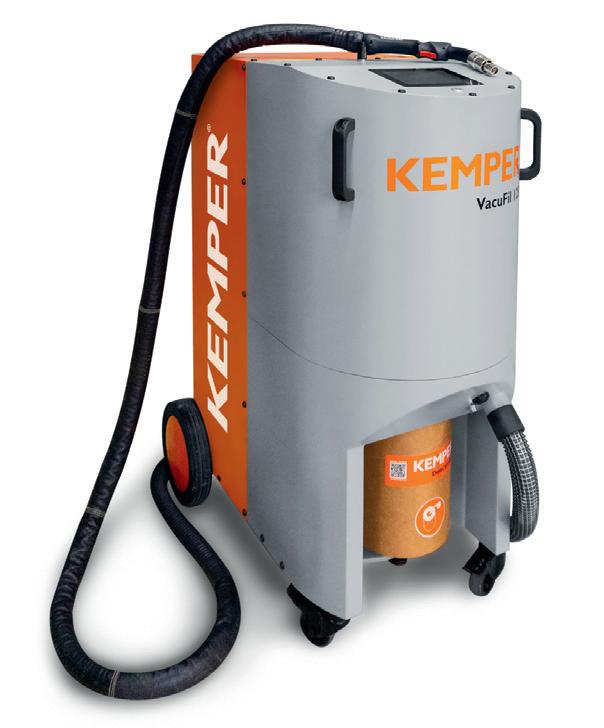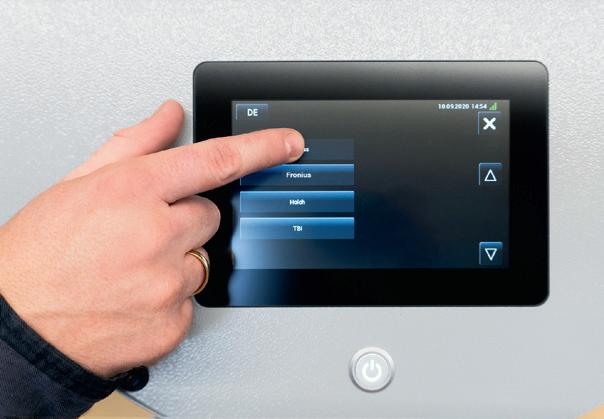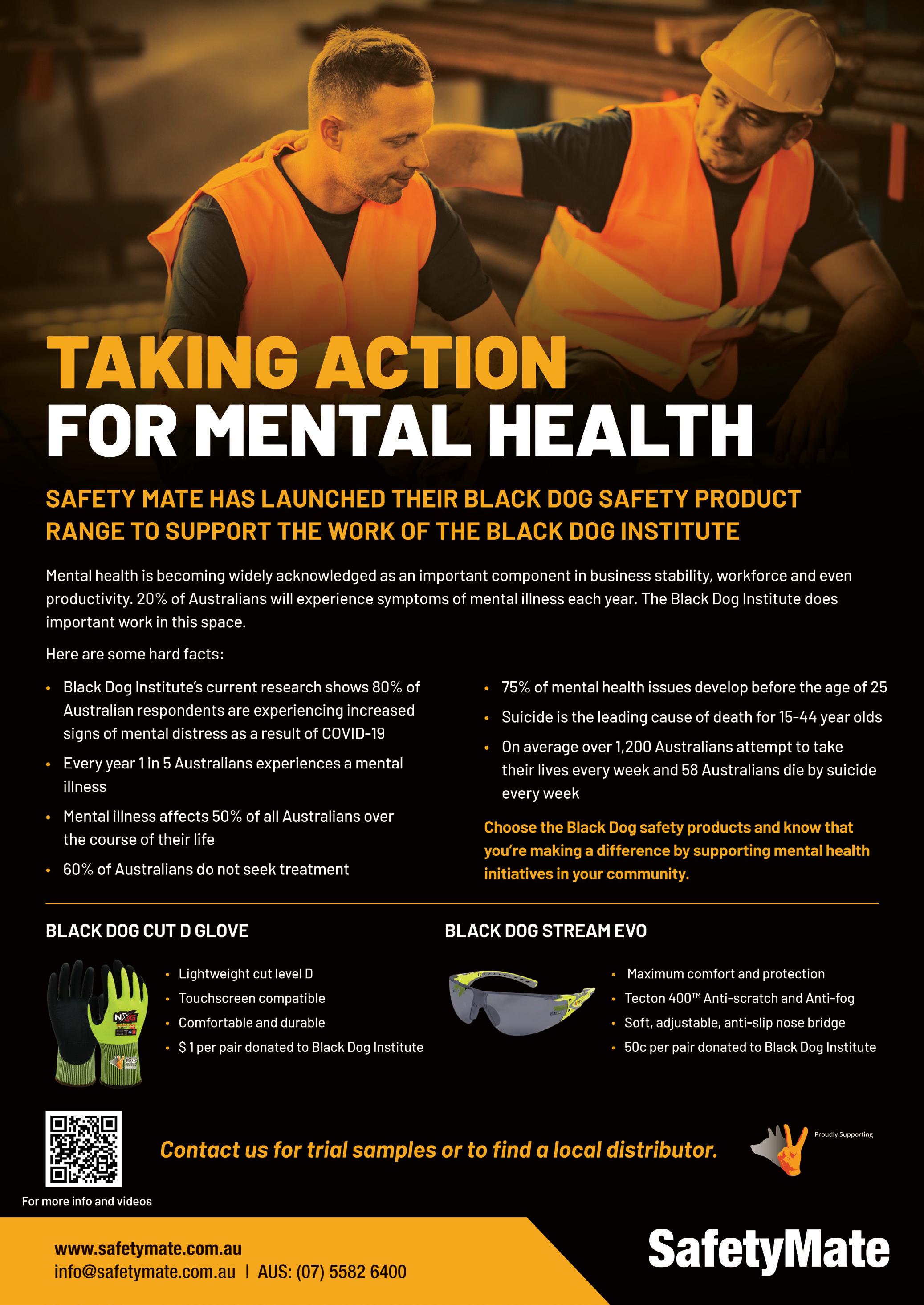
10 minute read
Ladder safety systems vs ladder cages — the new shift
LADDER SAFETY SYSTEMS vs LADDER CAGES
THE NEW SHIFT
Scott Barber*, Chief Executive Officer, Working at Height Association
© Stock.Adobe.com/au/LaCozza Regular access to elevated points on buildings or structures to perform routine maintenance or other tasks is not uncommon. In these situations, a fixed ladder integrated into or onto a structure is often used and it’s not unusual for a cage to be installed around the ladder in the mistaken thinking this will mitigate the risk of injury should a worker fall while climbing. But a fixed ladder with a cage is not a fall arrest system. In fact, as of 19 November 2018, the United States’ Occupational Safety and Health Administration (OSHA) has taken the formal stance that cages are not considered compliant fall protection on newly installed ladders.

Research into the effectiveness of fixed ladder cages has shown that they do not provide sufficient protection from falls. This research prompted OSHA to provide new parameters that are intended to improve protection from falls at height, provide greater flexibility and ease of use for workers, and make decisions around compliance and suitable solutions easier to navigate. These OSHA General Industry regulations were updated to reflect the changing understanding of and attitude towards the safety of fixed ladder cages and ladder climbing in general. What this change effectively means is any fixed ladders that need to be installed, repaired or replaced must be done so in accordance with the new Standard. Installing a certified ladder safety system that includes vertical lifelines or overhead self-retracting lifelines (SRLs) are both options that provide safe and effective means of access, and are easy to install as part of a new build or as a retrofit to existing ladders.
In 1996, OSHA 1910.21 defined a cage as “an enclosure that is fastened to the side rails of the fixed ladder or to the structure to encircle the climbing space of the ladder for the safety of the person who must climb the ladder”. On the other hand, it defined a ladder safety device as a device “designed to eliminate or reduce the possibility of accidental falls”. The difference in these definitions shows the way both safety devices were viewed at the time those regulations were implemented. Ladder safety devices were specifically intended to prevent or arrest falls, whereas cages were intended to improve safety without any specific explanation as to how they would do so.
These changes to the OSHA regulations have not necessarily been immediately reflected in other international standards and codes, but this change does represent a broader shift in how we look at the associated risks of ladder climbing. There is an existing assumption around safety at heights that if a caged ladder ‘complies’ with the relevant building codes, and if an employee were to then slip and fall from the ‘compliant’ ladder, the employer or building owner would be safe from any litigation. But this is not the case. It is the responsibility of the building designer, owner and employer to provide a safe work environment. This means ensuring that whatever means of access, the most suitable safety solution is applied. Should an incident occur, investigators and the court system will refer to best practice protocols to assess whether the system met the needs as determined by risk assessment.

Fall arrest solutions
For a person climbing a ladder, there are two systems that will genuinely provide fall protection: 1. A self-retracting lifeline (SRL) that is fixed to a suitable anchorage point at the top of the structure and connected to the operator’s harness.
OR 2. A guided fall arrest system (vertical lifeline) that is permanently fixed to the ladder.
Installing an SRL to the top of a ladder typically provides an easy solution, but it is not always practical considering the constant exposure to the elements and need for a rated anchor point. Hence the design of a good fall arrest system must take into account some basics of modern fall protection thinking: • The system must be easy to use. If it is not, the level of compliance may be lower than expected. • The system must limit the forces that will be applied to the person in the event of a fall to less than 6 kN — the less force the better. • The system must not drag on the person as they climb, otherwise it makes climbing all the more difficult, increasing the risk of fatigue. • A fall arrest system must be a system of components that enable the line of the system to follow the building or structure that it is connected to. • A good system will provide ‘continuous connection’ from the moment the person leaves the ground. This will enable the person to climb to wherever the job is, carry out the task and return, without disconnecting from the system.
There is still an argument for maintaining ladders in combination with an approved fall arrest system, particularly in circumstances where climbing may occur in a highly exposed environment where a cage may provide a level of physical and psychological comfort which can be very important to the climber. However, a cage around a ladder is not going to prevent an unconscious person from falling, whereas a fall arrest system will capture the user within a short distance. A caged ladder must not be mistaken for a ladder with an integral fall arrest system. Only a ladder (caged or otherwise) fitted with a fall arrest system will provide long-term safe access for workers in a way that will minimise the risks involved in climbing.
However, there are some obvious risks in the use of ladder cages as a primary safety method; for example, the potential for head-strike during a fall, loss of consciousness and creation of an extremely difficult rescue scenario for first responders. There are also cases of gruesome entanglements where falling workers tear off body parts during a rapid, uncontrolled descent. These kinds of risks are addressed when vertical lifelines are installed as safety systems. When applying the Fall Protection Hierarchy of Controls, it clearly identifies that a fixed ladder is not the ideal means of access if the work area requires frequent attention. In such circumstances, engineering out the risk by removing the need to access the area by moving essential plant and machinery to a more accessible position or the use of passive or collective systems (eg, stairs and walkways) are more appropriate, if possible.
Ultimately, as workplaces have changed, the understanding of hazards has also increased and subsequently the development of solutions and technology to manage those risks has evolved. Adopting best practice is always the most effective means of maintaining the health and safety of a workforce, and the use of cages does not reflect best practice. OSHA’s shift represents a positive step in reinforcing higher standards of safety and helps identify existing gaps in our current methodologies. Best practice includes the use of methods and techniques that best display thorough and effective safety management protocols, and looking at systems design, user profile, frequency of use and testing and certification as indicators of suitability.
THERE IS AN EXISTING ASSUMPTION AROUND SAFETY AT HEIGHTS THAT IF A
CAGED LADDER ‘COMPLIES’ WITH THE RELEVANT BUILDING CODES, AND IF AN EMPLOYEE WERE TO THEN SLIP AND FALL FROM THE ‘COMPLIANT’ LADDER, THE EMPLOYER OR BUILDING OWNER WOULD BE SAFE FROM ANY LITIGATION.
BUT THIS IS NOT THE CASE.
*Scott Barber is a professional marketer, copywriter and safety specialist with over 20 years’ experience designing, driving and facilitating communication and education as a fundamental engagement tool. Specialising in safety and rescue, both operationally and as a consultant, he uses his experience across multiple industries to deliver solutions targeting specific stakeholders using communication as the critical driver for change.

The VacuFil series of extraction units for torch extraction combine easy handling with needs-based extraction capacity. The VacuFil 125i, 150i and 250i digital unit variants automatically and continuously adjust the required air volume flows according to the individual torch characteristics. W3 approval also certifies that the digital VacuFil versions embody the highest level of protective welding equipment. To ensure that the protective gas layer is not destroyed, the correct extraction capacity is important for torch extraction. Extraction torches require an individual volume flow for this. The new EN ISO 21094 DIN standard defines how this is to be determined. The VacuFil high-vacuum units feature automatic speed control, which means welders do not have to determine the extraction capacity manually. They act in accordance with the standards at all times and the protective gas layer is maintained. VacuFil can be combined with any conventional welding torch. When welders couple their torch technology with the digital extraction units of the series, they select the torch of their choice on a touch display. The units then automatically adjust their output to the torch parameters stored in the unit’s software. The integrated extraction volume control enables the extraction systems to continuously adjust their performance during the welding process. This means that the highest possible airflow is used for extraction. Depending on the danger intensity of the welding process used, the VacuFil 125i, 150i and 250i versions are available with different maximum extraction capacities. The W3 certification from the Institute for Occupational Safety and Health certifies that the systems meet the best possible protective welding equipment standards. VacuFil is suitable for detecting high levels of smoke and dust during industrial welding. The automatic filter cleaning system enables uninterrupted continuous operation.
All units are also available as analog VacuFil 125, 150 and 250 versions. Here, welders set the required extraction capacity manually. All new VacuFil variants are suitable as mobile extraction units for use at changing workplaces or when working with large work pieces. Welders automatically carry the torch-integrated extraction unit with them while they are welding.
Kemper GmbH
www.kemper.eu

Zip-sided safety boot range
Australian safety boot provider Oliver Footwear has introduced a range of safety boots suitable for those working in agriculture, building and construction. The Hiker Boot range prioritises safety and comfort; an extension of the AT 45 and AT 55 boot series, the new range features a low ankle design. The Hiker Boot is designed for agriculture, building and construction workers who require the support and safety of a traditional work boot with elevated comfort. The low ankle design provides adequate support to those with active lifestyles, along with the ability to move around with ease.
This is achieved by employing a COMFORTcushion Impact Absorption System with PORON, which protects the heel and balls of the foot. The Oliver SOFTstride open cell low density urethane foam built into the insole provides contour support, while the NATUREform toe cap with a wide profile lends greater comfort. Both Hiker Boot styles feature water and high heat resistant technology; AT’s All Terrain dual density sole with lightweight shock absorbing durability makes both styles resistant to minerals, organic oils and acids. The AT 55 style is resistant to 300°C surface contact, while the 45 style is resistant to 130°C, making them suitable for all seasons.
Each style complies with Australian and New Zealand safety standards and comes with a six-month manufacturer’s warranty.
Oliver Footwear
www.oliver.com.au

Drench shower
The Drench shower features a pull rod-activated shower and push handle eye/face wash for immediate drenching of personnel that have been exposed to hazardous chemicals. The shower provides a continuous stream of non-injurious water for 15 min or longer, after activation.
The combination shower and eye/face wash delivers 30 GPM of flowing pressure from the shower head and 8.0 GPM of flowing pressure from the eye/face wash. The Drench shower is ready for installation to water supply and waste systems, and is compliant with ANSI and OSHA requirements.
HEMCO Corporation
www.hemcocorp.com










